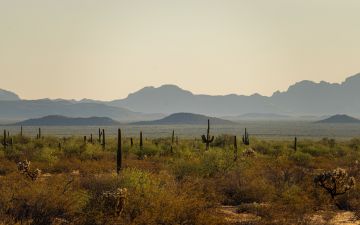In the late 1990s, immigration enforcement on America’s southern border shifted to a policy known as “prevention through deterrence.” Patrols were increased and fencing and surveillance equipment installed around the ports of entry in border cities such as Tijuana and El Paso. The goal was to push undocumented migrants towards the remoter and more forbidding borderlands—the mountain ranges, scrublands, swamps and, most forbidding of all, the Sonoran Desert, one of the hottest and driest places on earth. The idea was that would-be migrants in Latin America would learn from friends and family of the difficulties of crossing and elect not to try it.
Deterrence was not achieved, as we know. Instead, more people attempted to cross, and more died. The U.S. Border Patrol estimates that roughly 8,000 migrants who have died on the southern border since 1998—or an average of one death every day, for more than two decades. The most deadly migration corridors run through the Sonoran Desert. Last year, 41 percent of all migrant deaths on the border occurred there.
"Where the Bodies Aren't Buried" tells the story of the death of a single migrant. Roberto Primero Luis turned 23 shortly before his body was found near Sells, Arizona, on a parched hilltop overlooking the border. He was from Cobulco, a village in the Guatemalan highlands. Roberto made it the 2,300 miles from Cubulco to Sells only to succumb to the desert. Through reporting in Arizona, Mexico, and Guatemala, including interviews with Roberto's family and widow, the story tries to explain why Roberto and millions of others like him risk their lives, and often lose their lives, to come to the U.S.

